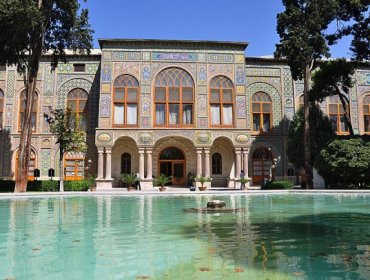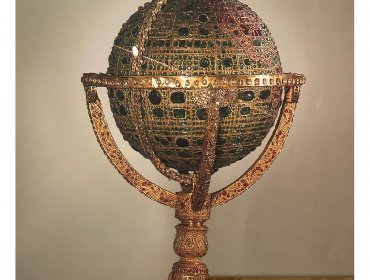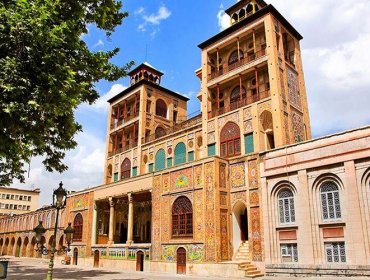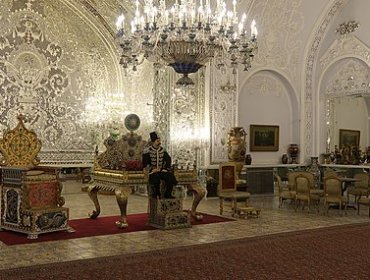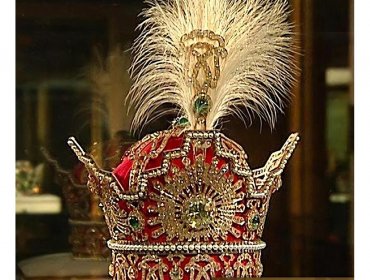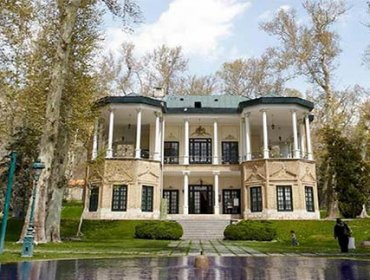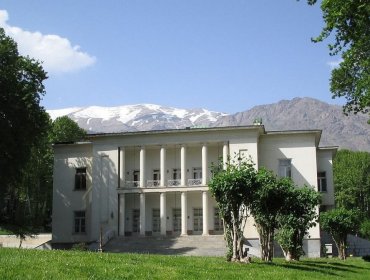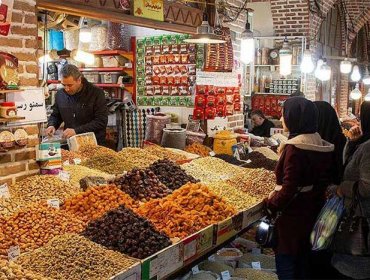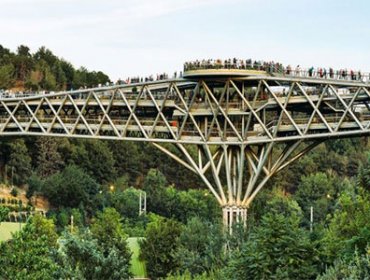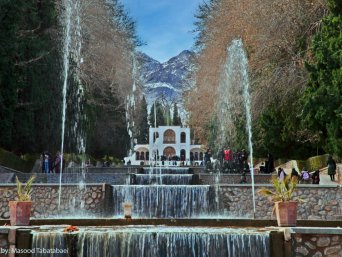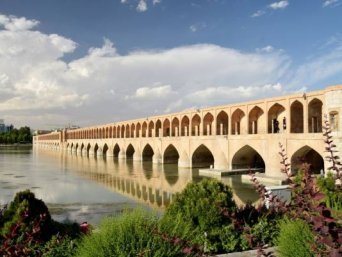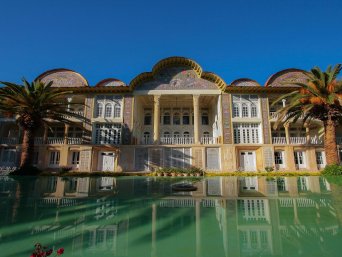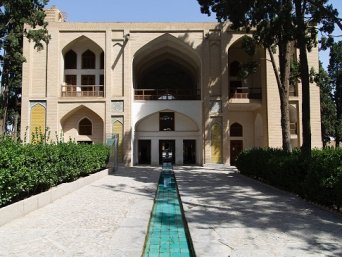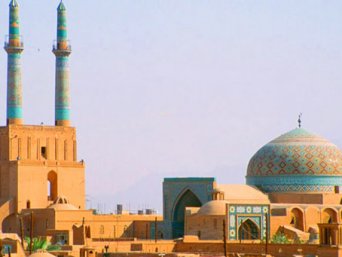Tehran, a crowded city you may not wish to visit?
Tehran, the capital of Iran, is nowadays known as a modern metropolitan, with a huge population of 9,259,000 people, crowded governmental offices, small and big private companies, towering skyscrapers, big malls filled to their throat with people, cramped hotels, overcrowded streets, a bit of air pollution and, of course, bumper-to-bumper traffic. All the characteristics common to the majority of big cities in our modern-day world, no? And, the Lonely Planet guide to Iran says Tehran has no history. However, Tehran, this colossal, seemingly colorless city of 21st century, holds many exciting stories at its heart.
Before turning into a notable city, Tehran was a trade market town in Shemiran region, located to the North of Ray (the most prosperous city of the region since the 10th century) and to the South of Alborz Mountain. During this period, Tehran was famous for its excellent pomegranates and the architectural style of its houses, with parts of them located under the ground. Actually, one guess is that Tehran was first called Tah-Run, meaning going under, and then its name transformed into present Tehran.
However, the Mongol invasion in 1220 AC and the destruction of Ray changed the fate of Tehran. Although itself suffering from the Mongol invasion, Tehran and its pleasant gardens and water springs attracted the homeless people of Ray to resettle there. And within a century, Tehran became the most important nucleus of the region.
During the Timurid rule )1370-1506AC), Tehran became the favorite town of princes, notable personalities and even the king himself. So, the Timurid nobles built a royal palace at the present site of the Golestan Palace.
During the Safavid period, Shah Tahmasb I, endowed the city with a central bazaar and surrounded it with a wall. However, Shah Tahmasb had other motives to pay attention to Tehran. Years later, Shah Abbas I built a temporary residence, Called Chahr-Bāgh, within Shah Tahmasb’s Arg or citadel Shah. Other Safavid kings also added certain structures to the previous ones constructed by their ancestors. All in all, they founded the base of what later came to be known as the Golestan palace.
During the Zand period, Karim Khan Zand added another building to the previous Timurid and Safavid complex, known as Khalvat-e Karim Khani or Karim Khani Nook.
However, the real political history of Tehran began when Aqa Mohammad Khan Qajar
(1742-1797) held his coronation ceremony at the Golestan Palace in 1795 and announced Tehran as his capital. Then, Fath Ali Shah Qajar (1771-1834), a very ambitious king, expanded the Arg and Golestan Palace.
In late 1867, inspired by the urban planning in St Petersburg and the work of Haussmann in Paris, Naser al-Din Shah ordered the French military engineer General Buhler to tear down the city walls and fill in the defensive ditch to form thoroughfares for European-style carriages. He also extended the walls of the Arg (citadel) and doubled the number of gates to 12. During his time, Naser al-Din Shah also made major changes to the Golestan Palace, under the influence of what he had seen in his travels to Europe.
During the reign of Mozafar al-Din Shah, Mohammad Ali Shah and Ahmad Shah no major changes were made to the Arg of Tehran.
As a matter of fact, Qajar dynasty is one of the most ambiguous and complicated episodes in the history of Iran. Many people remember the Qajar Kings as a bunch of weak sovereigns who gave up parts of Iran to foreign governments such as Russia. However, this period is also marked by several positive events too; the constitutional revolution being the most important of them. In addition, several students were sent to foreign countries, such as France and England, to study new sciences and when they came back to Iran, they became the pioneers of enlightenment in Iran.
However, the process of modernization in Iran accelerated when Reza Khan came to power in 1925. Founding the University of Tehran, establishing the new military of Iran and building a railway from the South to the North of Iran are counted as the most important legacy of Reza Shah.
After Reza Shah, especially with the unprecedented sell of oil in the 1960s, Mohammad Reza Shah (1919-1980) completely changed the face of Tehran. It is during this period when Tehran is adorned with modern cinemas, restaurants, universities, clubs, publications and sport centers. Also, many of the museums you can enjoy today were built in that period.
However, the most important event that occurred during the reign of Mohammad Reza Shah was the Islamic Revolution in 1977, led by Imam Khomeini. After the Islamic Revolution, Tehran turned into a metropolitan, attracting investors, students and workers from all parts of Iran.
So, against the unreal claims, Tehran has a big history of its own and many interesting stories to offer to its visitors. Therefore, book your Tehran City Tour with us at Irandelle Travel Agency and we will tell you amazing stories about Tehran.
Tehran City Tour Itinerary
Day 1
At 8:45 am our tour guide picks you up at your place of residence. Then, we head to the Golestan Palace. Golestan Palace, a UNESCO World Heritage Site, is a splendid garden and glorious complex of palaces representing the art of Qajarid craftsmen and a whole array of changes which occurred in Iranian art, triggered by new contacts with Europeans. The Golestan Complex includes: Talar-e Salam (housing the famous Marble Throne), Karim Khani Nook (Khalvat-e Karim Khani), Howz Khane (Pond House), Museum Hall (Talar-e Mūzeh), Brilliant Hall (Talar-e Brelian), Dish Hall (Talar-e Zorūf), Ivory Hall (Talar-e Adj), Mirror Hall (Talar-e Ayneh), Diamond Hall (Talar-e Almās), Edifice of the Sun (Shams ol Emareh), Building of Windcathers (Emarat-e Bādgir), Museum of Gifts (Mūzeh-ye Hadāya) and Abyaz Palace (Kakh-e Abyaz).
The Grand Bazaar of Tehran is our next destination. Here, we will walk through the almost always crowded lanes of the Bazaar of Tehran, exploring its Qajarid history and marvelous shops. Being one of the largest bazaars of Iran, and now a hugely important economic center of the country, you will find there almost everything imaginable.
When we finish visiting the bazaar, it is almost noon. So, we go to one those old, nostalgic restaurants in the bazaar of Tehran where they serve a large number of super-delicious traditional Iranian dishes.
After lunch, we go to the National Jewelry Museum of Iran, displaying a collection of most precious pieces of jewelry in the world. Each piece of this collection narrates part of the history of Iran and boasts the unparalleled skills of Iranian artisans. Let me give you an example of the invaluable pieces of Jewelry in the National Jewelry Museum of Iran. You may have heard about the Mountain of Light, a piece of diamond on the crown of the Queen of England, no? Its twin sister, the Sea of Light, is housed in this one-of-a-kind museum.
At the end of the first day of tour, we visit National Museum of Iran to have a more detailed look at the history of Iran. The National Museum of Iran was constructed by the order of Farah Pahlavi in 1958. Designed by the French Archeologist Andre Godard, the entrance of the museum represents Taq-e Kasra, one of the most important Sassanian palaces which was built in Ctesiphon, now located in Iraq. Inside the museum, we will review part of the history of Iran by visiting a huge number of amazing historical objects, dating from Iran’s history to the end of Sasanian period (224-650AC).
Day 2
On the second day of our Tehran City Tour, our tour guide will come to pick you up at 8:30 am to continue our amazing adventures. The first destination on the second day of our tour in Tehran is the Saadabad Palace or Kakh-e Sa’d Abād. During the Qajar Period, Sa’d Abad, which was a green region with a refreshing climate located at the foot of Alborz Mountain, used to be the summer residence of Qajar kings. However, when Reza Khan came to power, he bought this piece of land from Abolfath Sardār-e A’zam and built a private residence there for his wife, Taj al-Moulouk Ayerloo or the Mother Queen, a powerful woman and the mother of Mohammad Reza Shāh Pahlavi. Soon after, he also bought a nearby hill known as Ali Vali Khan hill and built there another residential palace, known as Shahvand Palace, for his other wife, Esmat Dowlat-Shahi. Then, during the reign of Mohammad Reza Pahlavi, this vast natural garden turned into the residence of Pahlavi family comprised of 18 palaces. Nowadays, most of these palaces are turned into museums, representing the life style of Pahlavi family. However, some of these museums house the works of greatest Iranian artists.
Having visited the Saadabad Palace, we go to the nearby Bazaar of Tajrish, immersing ourselves in the joys of a Qajarid bazaar (19th century) which is still alive and provides Iranian families with their daily needs: juicy fruits, fresh vegetables, delicious sweets, salty nuts and even home appliances.
After Bazaar of Tajrish, we eat a mouth-watering lunch and head for Pol-e Tabiat or Nature Bridge, to visit a masterwork of architecture which was built about 10 years ago by a young Iranian architect, Leila Araghian. Then, we will visit the National Museum of the Islamic Revolution & Holy Defense to listen to the stories of Iran’s Islamic Revolution and also the war between Iran and Iraq.
The Carpet Museum of Iran, the last site we will visit, was built by the order of Farah Pahlavi in 1976. The architectural design of the museum is unique. When we get there, we will spend some time outside the museum and you should guess the shape of the outer façade of the museum. And I can’t describe what you are going to visit inside the museum. Close your eyes and imagine the best designs and colors of Persian carpets you have ever seen in your life. I am sure that even after this imaginary experience, the carpets in the museum will still leave you with an open mouth.
So, to enjoy the marvels of Tehran, be sure to book your Tehran City Tour with us at Irandelle Travel Agency.

